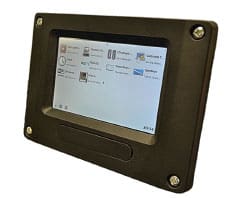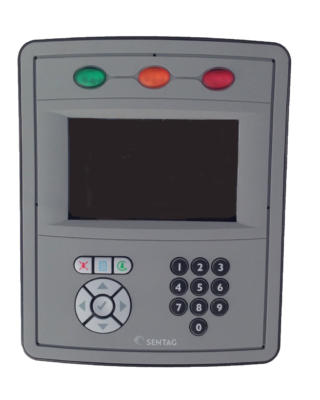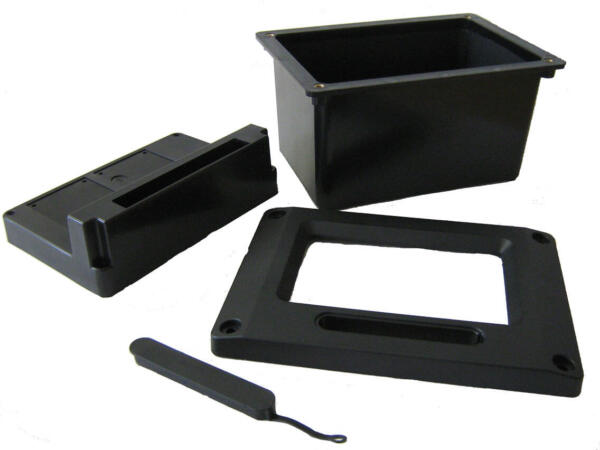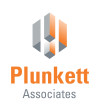Bringing a new product to market is challenging at the best of times. Generally the more technology involved, the more disciplines, the longer it can take. Hence sorting out the ‘box’ to house the device frequently gets pushed down the list as a “we’ll sort that out later” item!
Then before you know it, “later” arrives, you have no enclosure (after all ‘box’ is a bit derogatory!), no time and apparently no options.
Sound familiar? Maybe you are at that point currently and that is why you are reading this, or maybe, just maybe, you are still at the scheduling stage and there is plenty of time! Either way Plunkett Associates can help.
The parameters that will drive any solution are time, quantity, specification and of course, budget.

The design cannot start until the interface requirements and specification are known. However, given this information, design can take from 2 days to 4 weeks, depending on the complexity being sought, number of prototypes to be produced, validation testing etc. With the design in place 3D printed enclosures can be available in less than a week, aluminium injection mould tooling in 2 -3 weeks and even full production steel tooling in 4 – 6 weeks. Once the tooling is signed off moulding can produce 1000 plus parts a day.
Quantity
If production quantities are being measured in 10’s and there are no specific aesthetic or material requirements, then 3D printing (additive manufacture) or vacuum casting offer potential solutions. The transition point to tooling/moulding is driven by part size and complexity but can be sub 100 parts. Aluminium tooling will support moulding into tens of thousands of parts, and steel well in excess of this. So quantity is an issue in deciding the options at the lower end of the scale and it is important to remember quantity is a factor both in batch size and in annual call off. For example 20 parts a month is 240 per annum, which if taken as a single batch could well put you in moulding territory.
Specification
The devil is always in the detail. This should determine temperature requirements, aesthetics, sealing (ingress protection), fire retardancy, interface requirements, branding to mention but a few. The more detailed the specification the easier the job.
Budget
This certainly helps and it is worth pointing out that in many cases the best answer is to move step by step. How realistic are the quantity projections, how long will it take to get there and what can be done to help cashflow in the short term? In reality, this could mean vacuum casting or the use of standard enclosures initially, moving to development tooling and then committing to full production tooling only when the orders are in place.

Underlying all of the above is design. This is the key to achieving the timescales, specification and budget.
The prevalence of 3D printing means that many enclosures start life as 3D printed parts. However, the technology cannot support the higher quantities economically and a transition to moulding is frequently required. If this has not been considered early on, whilst enjoying the freedoms that 3d printing allows, then it is unlikely moulding will be viable without a redesign.
Design for Manufacture
Plunkett Associates will focus on design for manufacture (DFM), matching your design concept to the process that in turn matches your forecast quantities. Ensuring that the radii are where they need to be and not where they just incur cost, wall sections are feasible, access is possible etc etc. In this way the benefits of the process can be delivered and the downsides limited.
With options for tooling including aluminium and steel, UK and Far East manufacture, manual or fully automatic, screen printed, inserted etc, Plunkett Associates will then propose solutions. We will then manage the entire process to deliver the enclosures where you want them, when you want them.
The Solution
In summary our suggestions would be:
– take manufacturing feedback early on, around the proposed design
– design for success, quantify issues early on that will not be achievable if later quantities increase
– take a step by step route into manufacturing, learning from each step and potentially enhancing the product along the way
– despite the hype around 3D printing, look at injection moulding (or CNC) as options, economic quantities can be lower than you expect
– don’t be put off by having no design experience, we can work from sketches, models, really anything you have, and do the design for you.
– aim high, we will always give you options!
Blog by Plunkett Associates

